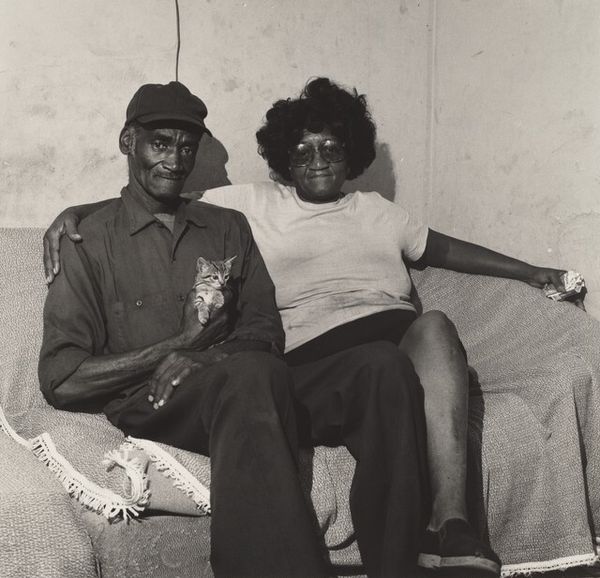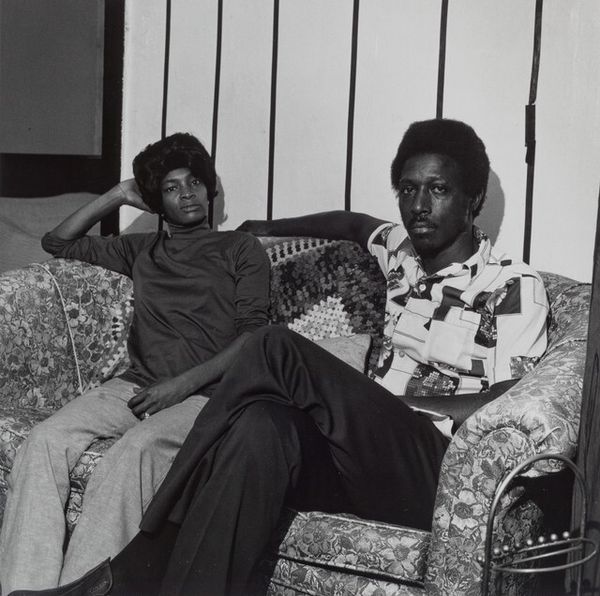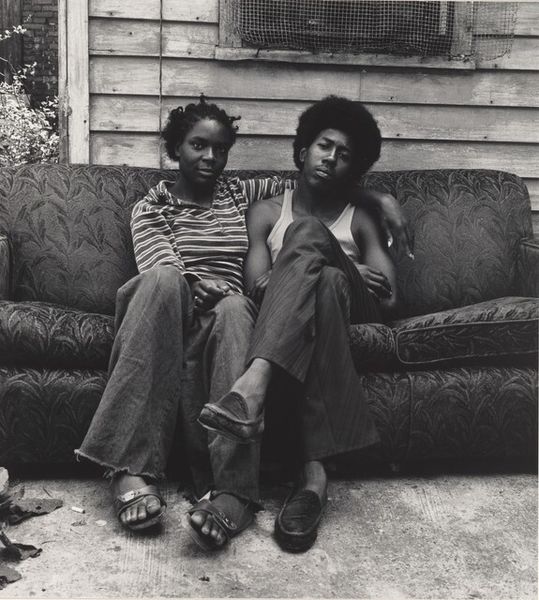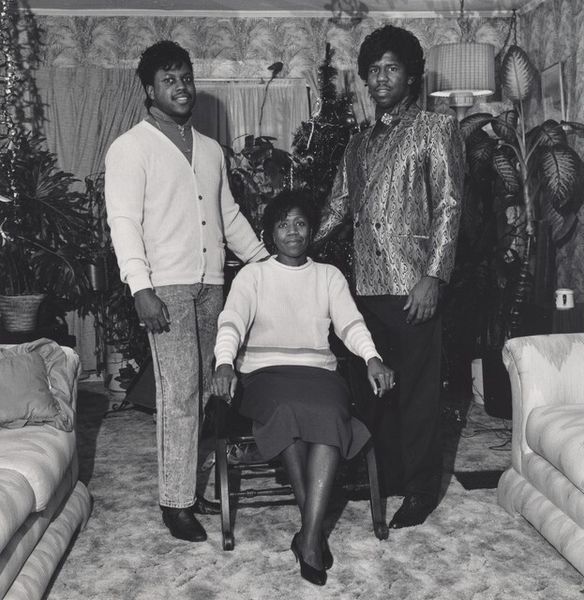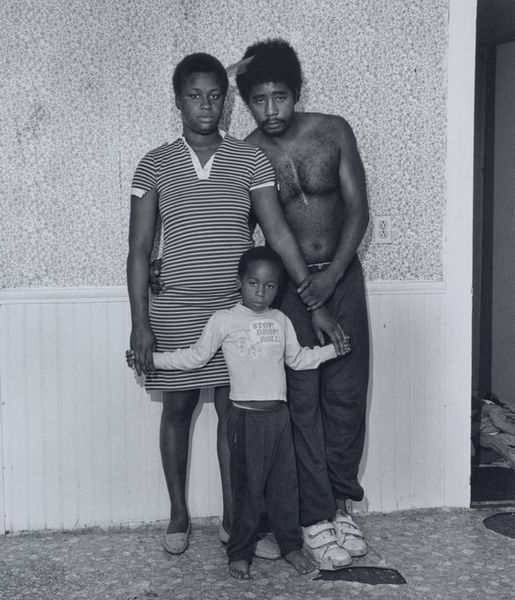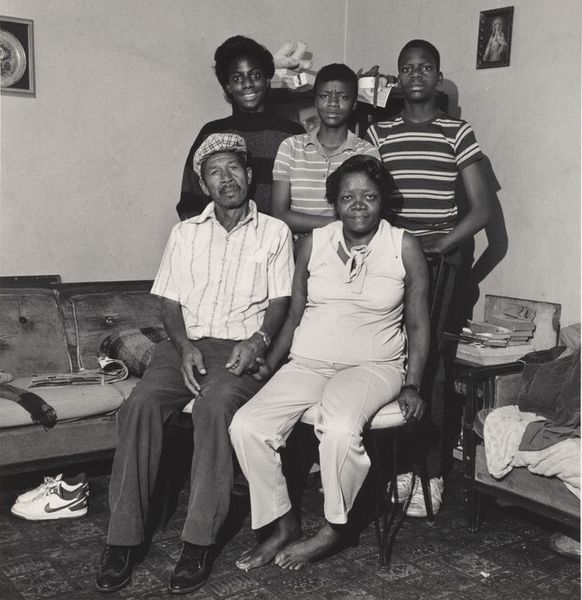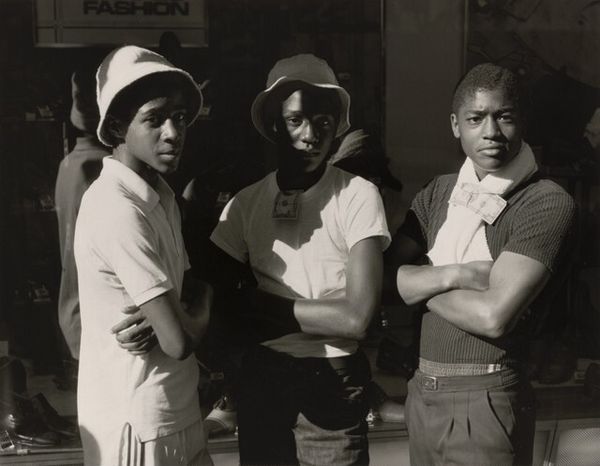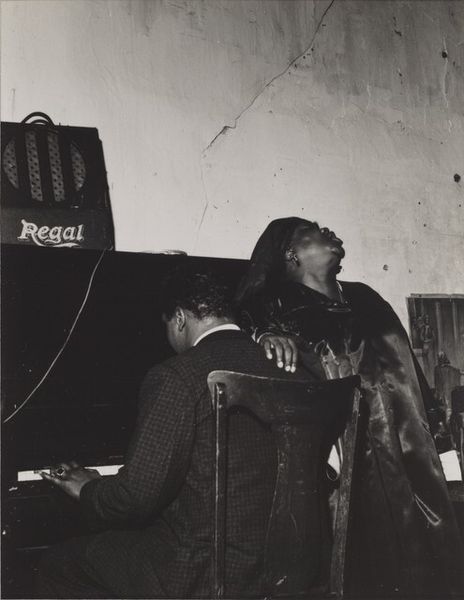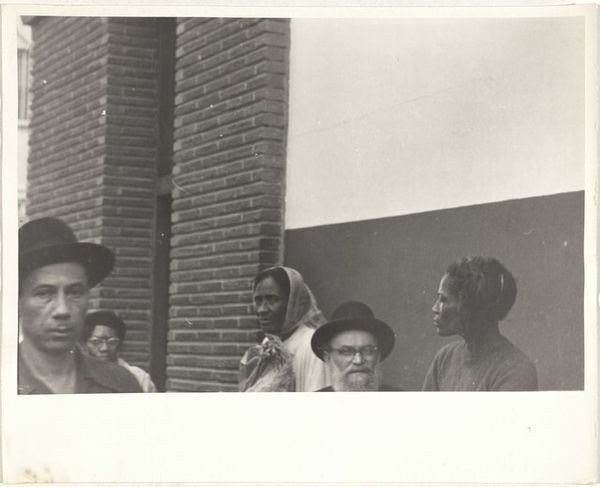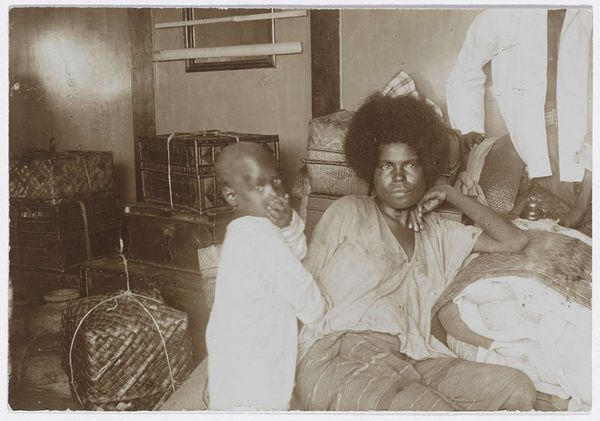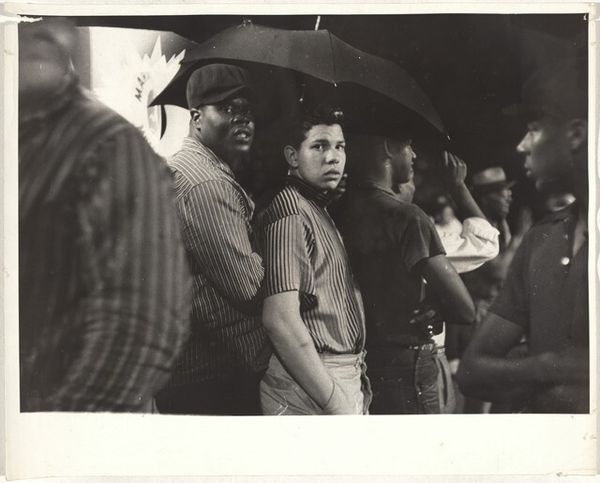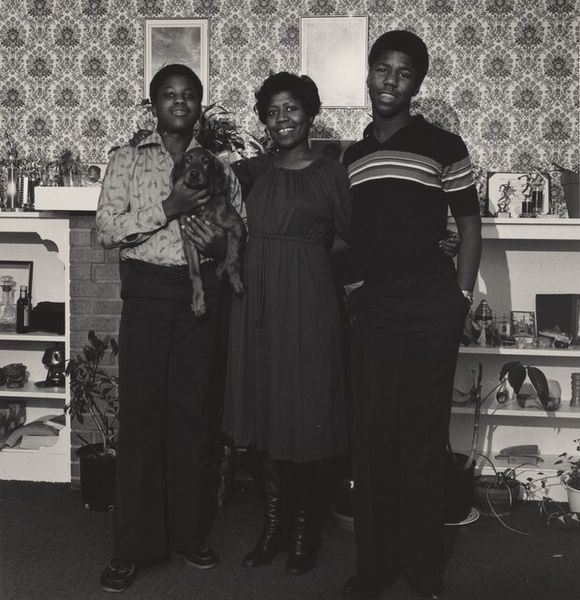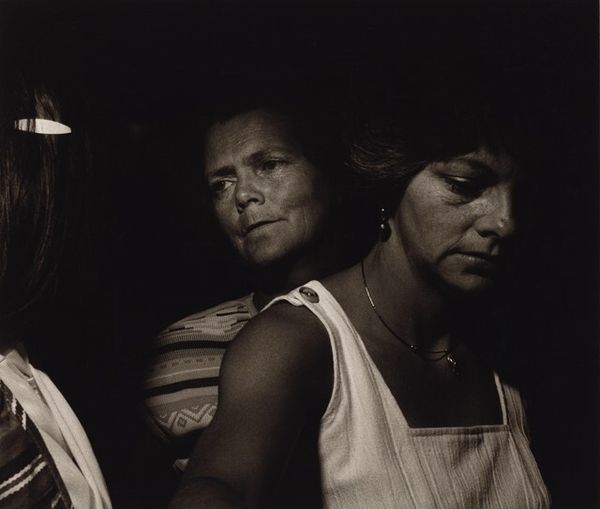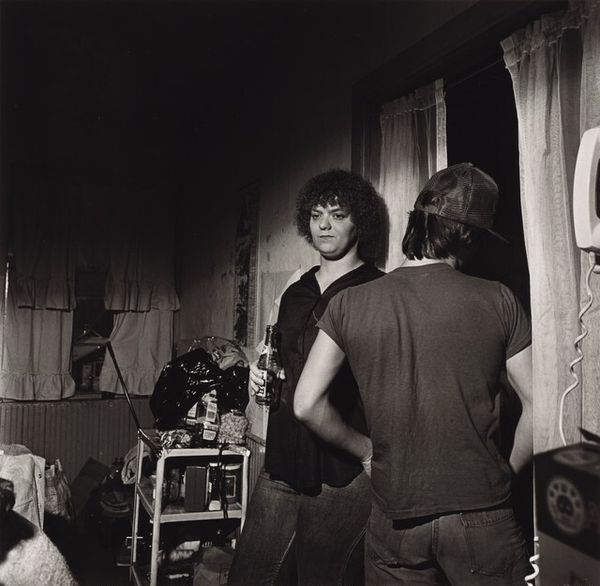
photography, gelatin-silver-print
#
portrait
#
black and white photography
#
photography
#
historical photography
#
black-arts-movement
#
black and white
#
gelatin-silver-print
#
monochrome photography
#
ashcan-school
#
monochrome
#
realism
#
monochrome
Dimensions: image: 17.1 x 15.8 cm (6 3/4 x 6 1/4 in.) mount: 35.5 x 27.9 cm (14 x 11 in.)
Copyright: National Gallery of Art: CC0 1.0
Curator: I'm struck by the composition here—the somber mood really comes through, especially with that limited grayscale. Editor: This gelatin silver print is "Untitled (Lower West Side series)" by Milton Rogovin, taken in 1973. Rogovin's work is deeply entrenched in social realism. He aimed to capture the everyday lives and struggles of working-class families. This particular image is a striking example of his commitment. Curator: There’s such directness to their gazes; they invite observation yet hold a clear reserve. It seems like an appeal and defiance wrapped in one. The portrait of Martin Luther King in the background deepens it, giving the subjects a grounding. Editor: Precisely. Rogovin operated outside the mainstream art world for much of his career. His focus on marginalized communities granted them visibility at a time when representation was severely lacking. He wasn't just taking pictures; he was archiving the cultural memory. Curator: I wonder about the symbolism embedded in their clothing. Notice the hats, especially how the broader brim casts the young man's face partially in shadow. It invites the observer to decode their meaning. And look at the textural contrast between their fabrics. Editor: Considering the Ashcan School influence, Rogovin aimed to reflect the grittiness and authenticity of urban life. This image presents a glimpse into their lives, the space they inhabit, and the forces—social and political—that shape their identities. Curator: The tonal range really creates depth, highlighting details like the textures in clothing and the wear on the wall. Visually it resonates with a feeling of profound respect, the very antithesis of exploitative representation. Editor: Rogovin passed away in 2011, but his powerful documentations serve as enduring records of resilience and humanity. This piece provides an invaluable record of urban experience and African American identity during that period. Curator: Reflecting on our discussion, the photo does much more than present a pretty image. It is a carefully constructed tableau which demands a dialogue regarding its time, its subjects, and the conditions it reflected. Editor: Yes, an excellent reminder of art's potential to promote social understanding and act as a catalyst for societal change.
Comments
No comments
Be the first to comment and join the conversation on the ultimate creative platform.
